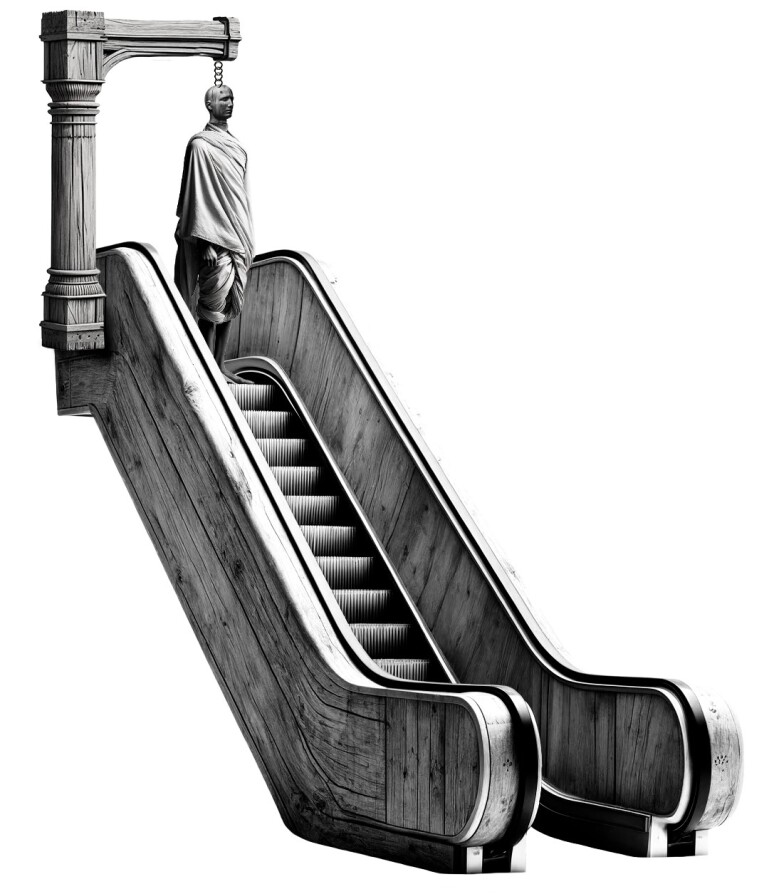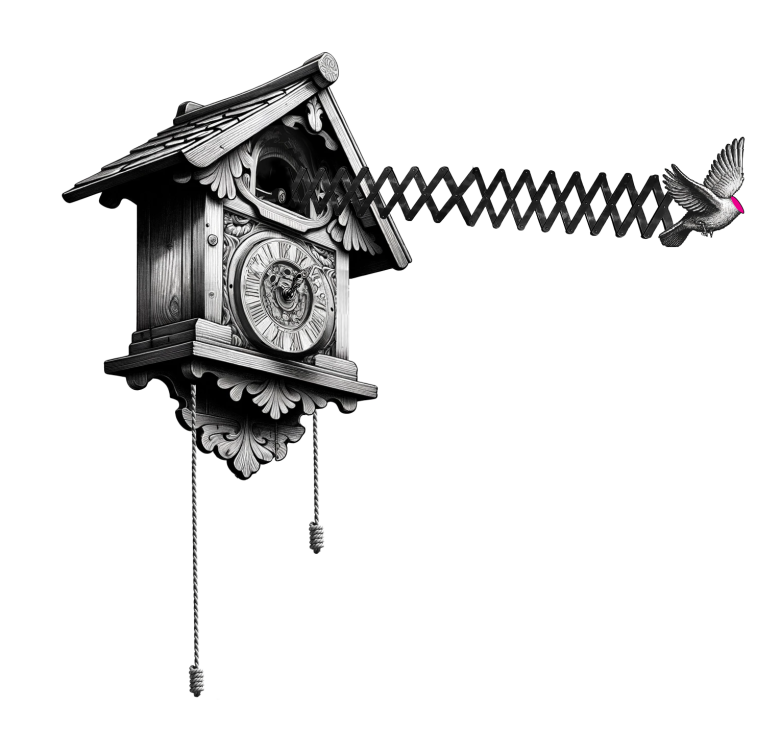
ENTERTAINMENT IN PUBLIC
Inspired by an Object's History
Interdiciplinary Archival Project
Curated by Hoda Sargordan
by Taha Zaker
Project description
While the materials used in this installation craft a narrative of microhistory, the project’s historical narrative contrasts with the dominant one by highlighting its shortcomings. Presenting this project today is crucial due to the ongoing realization of Dr. Joseph Guillotin’s eighteenth century vision, where he foresaw a future where understanding human suffering would be vital. Although Dr. Guillotin envisioned ending suffering by advocating for the guillotine as a capital punishment apparatus, his dream ultimately became a historical nightmare. Nevertheless, his efforts were the initial step toward the abolition of executions. The project traces humanity’s historical journey, from the dream of the guillotine to its nightmare and eventual abolition.
What kind of art is this?
Given that the guillotine execution is a physical act, I wanted to create a work that embodies this experience; therefore, I proceeded with an installation piece that incorporates interdisciplinary approaches. The exhibition is arranged in a way that puts pressure on the body of the viewer. This pressure is not just psychological or physical, but rather a kind of trap in a labyrinthine structure that implicates the entrapment of our historical understanding of execution. Although the visuals of execution has become less prominent today, it still resonates as an exciting news item in the media. Serial killers are still fascinating , and news related to them is entertaining. The production process of this project is similar to a cinematic or theatrical production. The multifaceted execution of this art project involves various teams in an interdisciplinary approach. These teams include researchers, writers, video artists, graphic, sounds and costume designers, makeup artists, as well as a technical team comprising mechanical and electronic engineers, carpenters, blacksmiths, game designers, architects, and more. Much like a director orchestrating a production, I have drawn upon diverse disciplines to craft a holistic experience centered on an object, in this instance, the guillotine.

Statement
The questions related to the death penalty and the historical trajectory that the use of the guillotine led me to address this topic to Narrative Installation. I realized that without narrating the stories of those who have been involved with the guillotine and executions throughout history, it is not possible to convey the comprehensive aspects of this concept. For creating a holistic experience in the installation, we needed to talk extensively in the project statement about topics such as punishment, discipline, power, etc. Nevertheless, we did not want to present this information in the form of a lengthy academic article or an educational film that likely has a limited audience. Hence, the statement of this project was designed in the form of an Instagram page to gradually convey information about this art project to the audience. We also used a video essay format to narrate the stories of those involved with executions throughout history conveying the visual aspect and catharsis of the execution ceremony to the audience. However, I did not want to merely represent this topic and needed to reach an artistic expression by interpreting the impact and adding parts of my own perspective on this phenomenon.
History
The dominant narrative of history, often exerts hegemony over other hidden or forgotten narratives. We might never be able to fully comprehend the entire reality of what actually occurred during a certain time. According to Michel Foucault’s layered view of history, which emphasizes the “hidden,” “unsaid,” and “unconscious” aspects of cultural production and power, our historical approach for this art project is microhistory. Metaphorically speaking, our approach is akin to performing surgery on small units of history with available archives to expose what lies beneath the surface. In microhistory, we examine history in detail, similar to viewing it through a microscope, to understand the experiences that surrounded objects such as the guillotine. For that reason, we don’t overlook gossip and minor details; we pay attention to stories from tabloid journalism and less popular media. Microhistory uncovers the raw and unpolished sides of history that are usually absent in the dominant narrative but we do not lose the big picture here that is the gestalt view of how objects of power work in the context of history as a whole.

The last recorded use of a guillotine* for punishment took place on September 5, 2022 when a convict’s hand was amputated in Evin Prison, Tehran.
*However, this device is originally an industrial guillotine, primarily designed for cutting metal sheets or paper. In some instances, it has been repurposed for carrying out judicial amputations and is commonly referred to by the same name.
Source of Inspiration
Residing in a country that holds the highest execution rate per capita globally, like many fellow Iranians, I am confronted with news of executions on an almost daily basis. Over time, the presence of capital punishment has become deeply embedded in the everyday life of citizens, provoking little emotional response. The persistent and historically entrenched practice of capital punishment is remarkably extraordinary, yet it is met with reactions as though it were an ordinary topic. I began to question myself: as a human, what is my responsibility toward such a phenomenon? In this contemplation, understanding the pain of others is a key question that has been explored by many philosophers and theorists. Nevertheless, I felt the urge to express my thoughts on this subject through an artistic lens.
Turning a human being into a thing, an object, is almost always the first step towards justifying violence against that person.
"Jean Kilbourne"

Artist’s Philosophy
While nowadays in most countries that execution penalty exists, the executions have been moved inside prisons, for thousands of spectators during the French revolution era, execution was an exciting event in public. The execution, considered a punitive and a tradition designed to deter future criminals, has always been a performative spectacle. Since the essence of performance is showmanship, watching an execution becomes entertaining. For this reason, when the first execution with the guillotine was carried out on 25 April 1792, in Paris, the angry crowd that had gathered to watch the execution revolted. They were dissatisfied with the fact that the victim’s head was severed quickly. The people who had come to watch the execution expected a longer and more painful entertaining show. The «Entertainment in Public» project was initiated with a fundamental question in mind: Why, over two centuries ago, did Joseph Guillotin advocate for the use of a beheading device to minimize the agony and distress of condemned individuals, ultimately expediting the execution process? He had already written a six-point statement on the necessity of respecting the human rights of the most dangerous criminals sentenced to death. Guillotin’s concern, guides us to a broader understanding of comprehending the pain of others.
